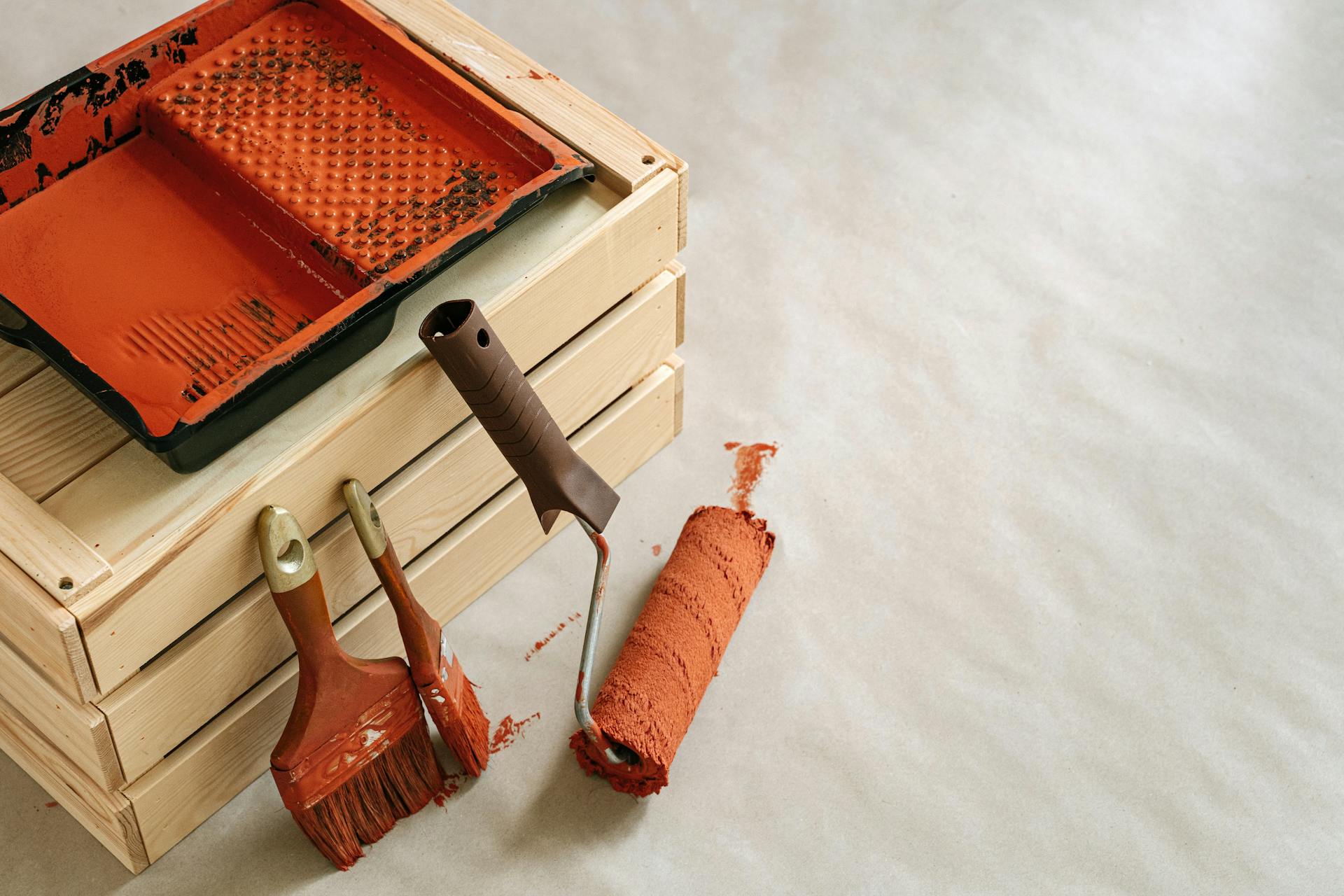Imagine transforming your home into a more beautiful, functional, and valuable space—all without breaking the bank. Whether you’re looking to sell or simply want to enjoy your home more, a few smart DIY projects can make a world of difference.
Home improvement has long been recognized as one of the best ways to increase the value of your property. In today’s competitive real estate market, homeowners are realizing that small, cost-effective upgrades can yield impressive returns. With the rise of DIY culture, more people are rolling up their sleeves to take on projects that not only enhance their living spaces but also save them money. From refreshing tired kitchens to adding curb appeal, simple upgrades can breathe new life into a home. In this article, we’ll explore some of the top DIY home improvement projects that can boost your home’s value and give it the fresh look it deserves—all without the hefty price tag.
1. Kitchen Upgrades
The kitchen is often the heart of the home, and upgrading it can have a substantial impact on property value. One of the most cost-effective ways to transform your kitchen is by refreshing your cabinets. Repainting or refinishing cabinets can make a world of difference, turning worn, outdated cabinetry into sleek, modern storage solutions. For a more contemporary look, consider swapping out the old knobs and handles with trendy, high-quality hardware. This simple change can immediately uplift the space and give it a more polished appearance. Another DIY project that can elevate your kitchen is adding a stylish backsplash. Whether you opt for classic subway tiles, bold patterns, or modern mosaics, a well-chosen backsplash can add texture, color, and style, giving your kitchen a fresh new look without a major renovation.
2. Bathroom Makeover
Bathrooms are one of the first places potential buyers look when evaluating a home, and small improvements can have a big impact. Re-grouting tiles, for example, is an easy DIY project that can refresh the entire space. Old, discolored grout can make your bathroom look dingy, while fresh grout brings tiles back to life. Upgrading your showerhead or faucets is another simple project that can modernize your bathroom. Opt for water-saving, eco-friendly fixtures that not only look great but also reduce utility costs. A new vanity or mirror is another way to make a bathroom feel more luxurious. Whether you install a sleek, contemporary vanity or replace an outdated mirror with a stylish new option, these upgrades can add both function and style to the space.
3. Curb Appeal Enhancements
First impressions matter, and enhancing your home’s curb appeal is one of the easiest ways to add value. Landscaping is an effective DIY project that can have a significant impact. Adding new plants, trees, or creating a small garden can make your home look more inviting and well-maintained. Freshening up your front door with a bold, new color is another simple way to make your home stand out. A striking front door can set the tone for the rest of your home, and it’s an upgrade that doesn’t require a large investment. Installing attractive outdoor lighting fixtures can also elevate your curb appeal. Strategic lighting can highlight key features, such as landscaping, architecture, or a beautiful front porch, making your home look more welcoming during the evening hours.
4. Energy Efficiency Improvements
Incorporating energy-efficient upgrades not only saves money in the long run but can also significantly increase your home’s value. Improving insulation in the attic or walls is an effective way to reduce energy costs while making your home more comfortable year-round. A smart thermostat is another DIY upgrade that can help you better control your home’s temperature, reduce energy consumption, and save money on heating and cooling bills. Replacing old light bulbs with energy-efficient LED lighting is a quick, inexpensive way to lower your electricity bills and make your home more environmentally friendly.
5. Flooring Updates
Updating your flooring can completely transform the look and feel of your home. Installing laminate or vinyl planks is an affordable and stylish alternative to hardwood floors. These materials are easy to install and come in a variety of designs, mimicking the appearance of wood or stone. If you have existing hardwood floors, refinishing them can give them a polished, like-new appearance. Sanding, staining, and sealing can restore the natural beauty of your floors while adding value. For a more high-end look, consider installing ceramic or porcelain tile. While DIY installation requires some skill, the results are well worth it, providing your home with a timeless, sophisticated finish.
6. Painting and Wall Treatments
A fresh coat of paint is one of the simplest and most cost-effective ways to transform any space. Neutral or trendy colors can breathe new life into your home, making it look fresh and modern. If you’re looking to add a bit of flair, consider creating an accent wall with bold colors or textured wallpaper. This approach can add depth and personality to a room, enhancing its overall appeal. Updating wall trim is another DIY project that can make a significant impact. Installing or replacing baseboards and crown molding can give your rooms a polished, upscale look and add a touch of elegance to your home.
7. Adding Functional Space
Maximizing the use of your home’s square footage can make a huge difference in its value. Turning an unfinished basement or attic into a functional living area is a great way to increase both usable space and your home’s appeal. Whether you create an extra bedroom, home office, or entertainment room, this transformation can add significant value. If you’re short on space, adding built-in shelves is a smart solution. Custom shelves can offer additional storage or display space while improving the room’s functionality and appearance. Outdoor living areas, such as a DIY patio or deck, are another way to create more usable space and enhance your home’s overall appeal.
8. Smart Home Features
Smart home technology is becoming increasingly popular, and adding a few simple features can boost your home’s value and convenience. Installing a DIY security system not only increases safety but also gives potential buyers peace of mind. Smart lighting, which allows you to control lights remotely or set schedules, can be both functional and energy-efficient. Installing smart plugs and devices throughout the home makes everyday tasks easier and more efficient, helping homeowners save time and energy. These smart upgrades may seem small, but they can make a home feel more modern and appealing to tech-savvy buyers.
Conclusion
Incorporating DIY home improvement projects can be an effective and budget-friendly way to increase the value of your home. From kitchen and bathroom upgrades to energy-efficient improvements and smart home features, the possibilities are endless. Remember that planning, budgeting, and understanding the return on investment are key to choosing the right project. By focusing on enhancements that align with your home’s style, location, and buyer preferences, you can make improvements that not only boost the value of your home but also make it a more enjoyable place to live.
Frequently Asked Questions (FAQs)
1. What are the most cost-effective DIY projects that add value to a home?
Some of the most cost-effective DIY projects that can increase home value include repainting kitchen cabinets, installing a stylish backsplash, upgrading bathroom fixtures, refreshing landscaping, and adding energy-efficient features like LED lighting or a smart thermostat. These projects are affordable yet can make a noticeable impact on your home’s overall appeal and value.
2. How long do DIY home improvement projects typically take?
The time it takes to complete a DIY home improvement project can vary depending on the complexity of the task and your experience. Simple tasks, like repainting cabinets or updating hardware, can be completed in a weekend. Larger projects, such as refinishing floors or installing a backsplash, may take several days or longer. It’s important to plan ahead and allocate enough time to complete the project properly.
3. How do I know which DIY project will add the most value to my home?
The best projects for adding value depend on your home’s current condition, location, and buyer preferences. Kitchen and bathroom upgrades, energy-efficient improvements, and enhancing curb appeal tend to offer the highest return on investment. Focus on areas that are often seen as essential by homebuyers and consider your budget, skill level, and the amount of time you can invest in the project.
4. Can I complete all these projects without professional help?
Many of the projects listed can be done by DIY enthusiasts with basic skills, especially those involving painting, installing new hardware, or updating fixtures. However, certain tasks, such as electrical or plumbing work, may require professional assistance for safety and code compliance. Always assess your skill level and the complexity of the task before deciding to go it alone.
5. Will DIY projects increase my home’s resale value?
Yes, many DIY projects can increase your home’s resale value, especially if you focus on areas that potential buyers care about, like the kitchen, bathrooms, and overall curb appeal. However, the value added will depend on the quality of the work, the materials used, and how well the updates align with market trends and buyer preferences in your area.
6. How can I stay on budget while doing DIY home improvement projects?
Staying on budget requires careful planning and choosing projects that fit within your financial limits. Research materials and tools before starting and opt for affordable alternatives when possible, such as laminate instead of hardwood or a fresh coat of paint instead of new cabinetry. It’s also important to account for any unexpected costs that might arise during the project.
7. How do I measure the return on investment (ROI) for my DIY home improvements?
To measure ROI, consider how much value the project is likely to add to your home compared to the cost of completing it. Some projects, like kitchen or bathroom upgrades, tend to offer a higher ROI, often recouping a significant portion of their cost. Use online resources, such as home improvement cost calculators or consult with a real estate agent, to estimate the potential return for each project.
8. What are some common mistakes to avoid when doing DIY home improvement projects?
Common mistakes include underestimating the time or skill required, overlooking necessary permits, choosing low-quality materials, or rushing the project. It’s also easy to forget to plan for the unexpected, such as structural issues or hidden damage. Always take the time to research each project thoroughly, plan ahead, and follow instructions carefully to avoid costly mistakes.

